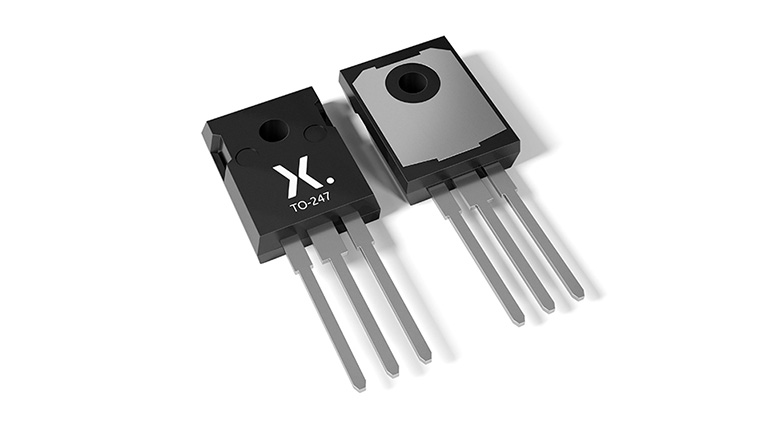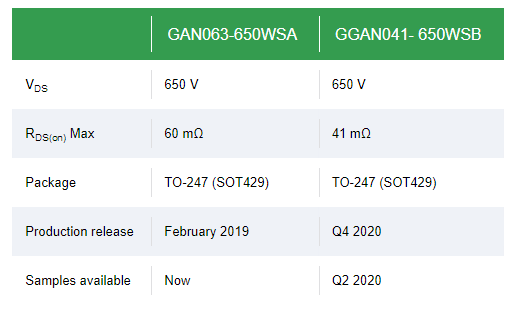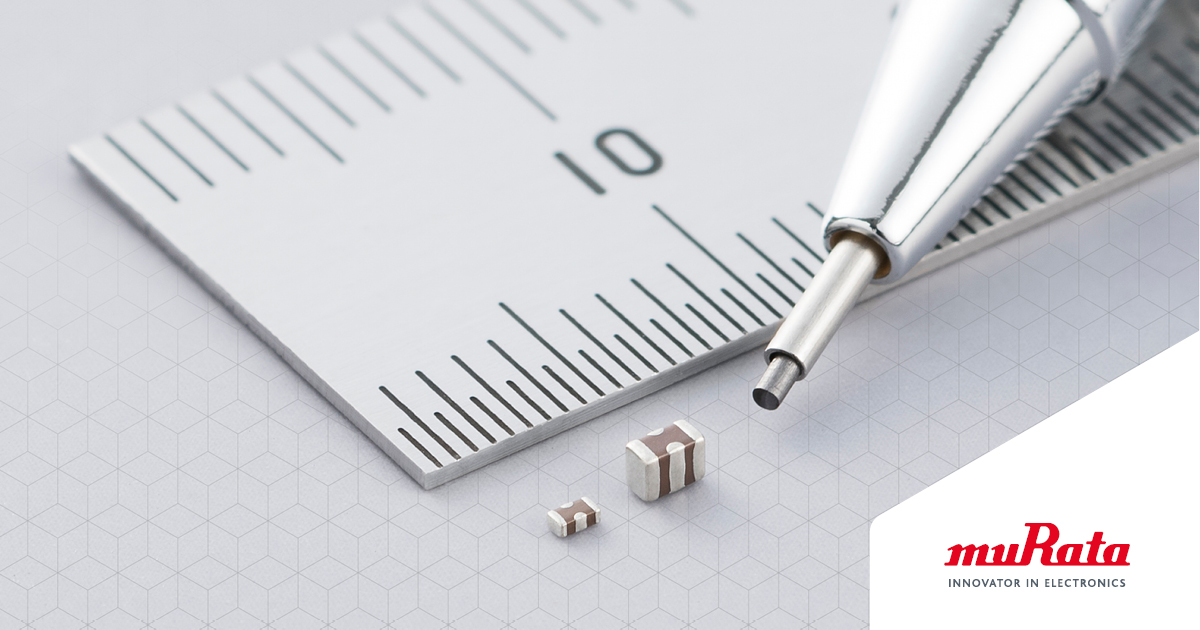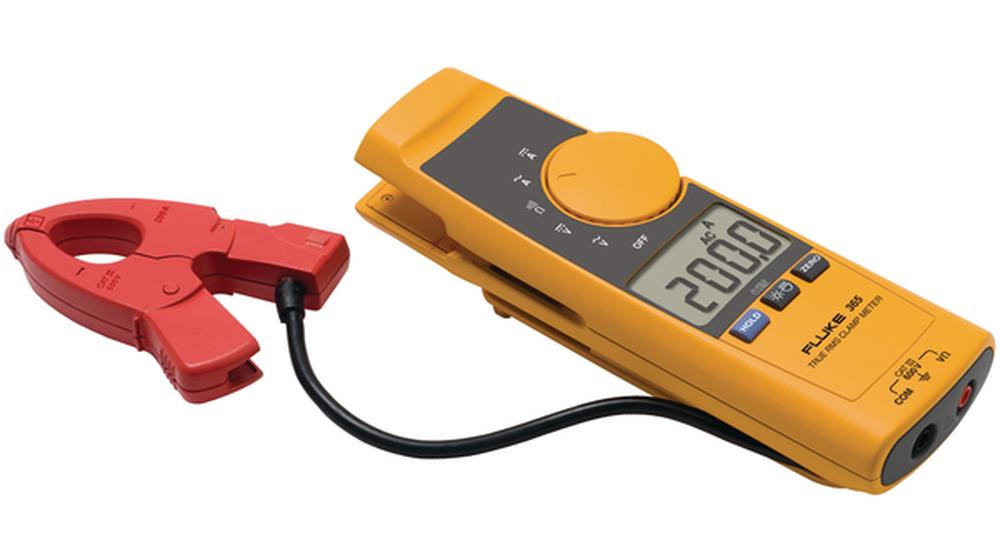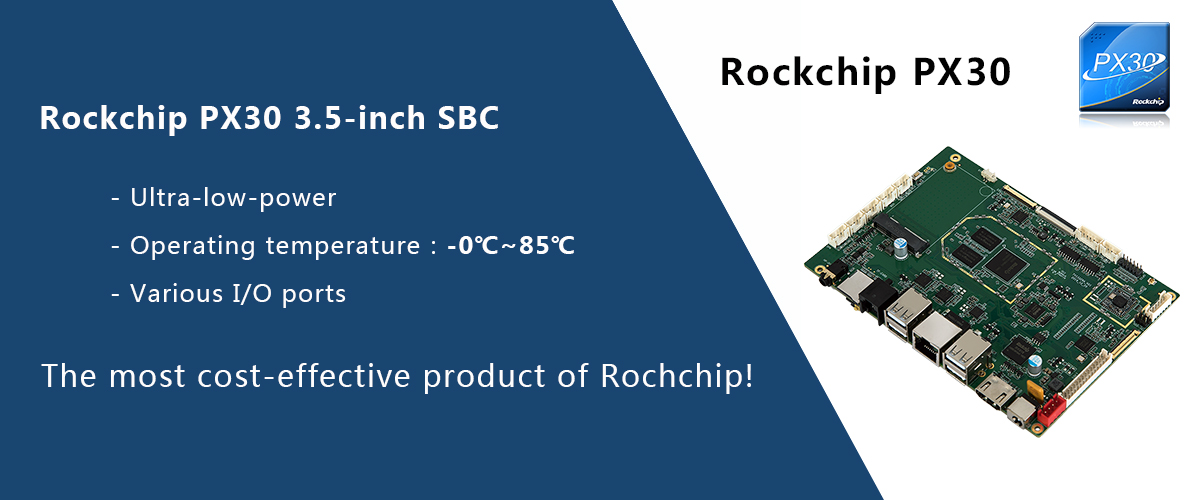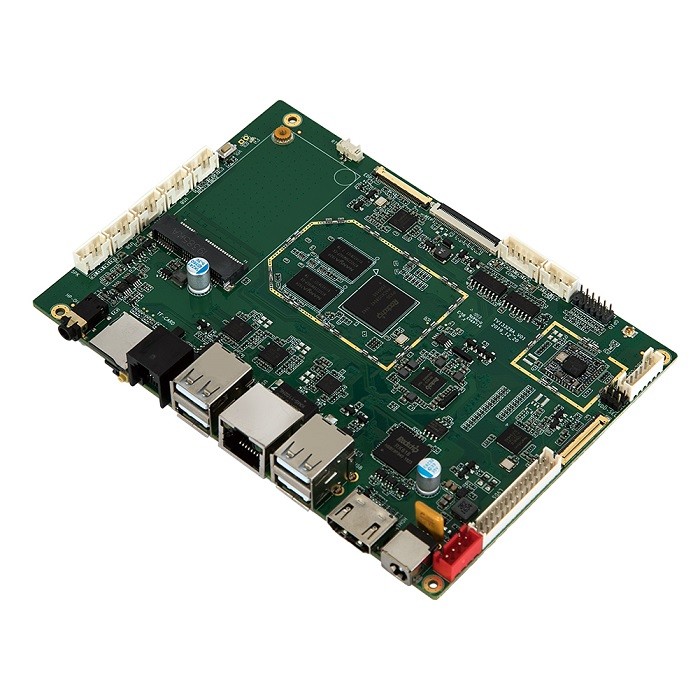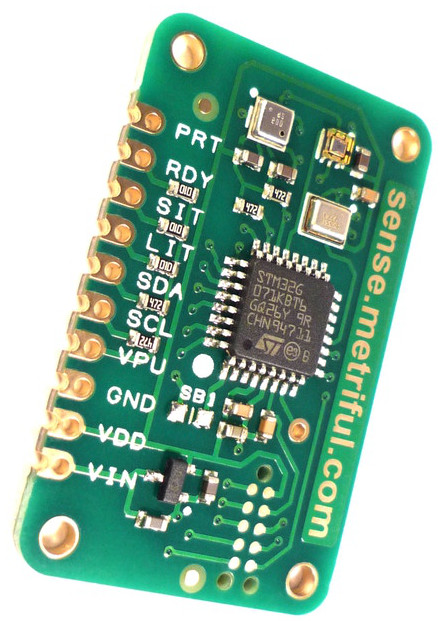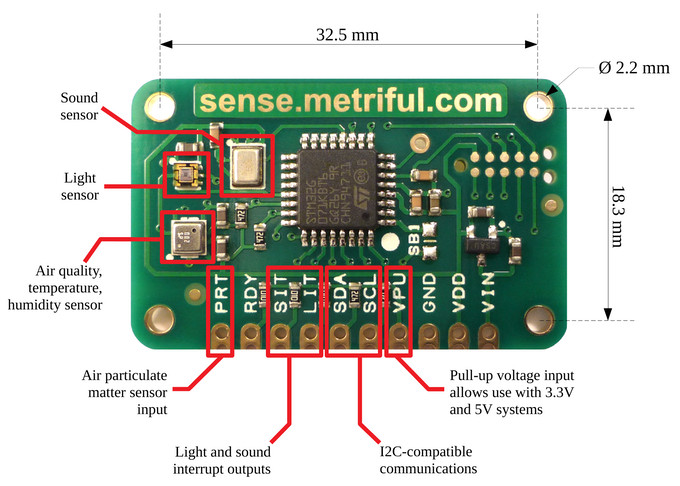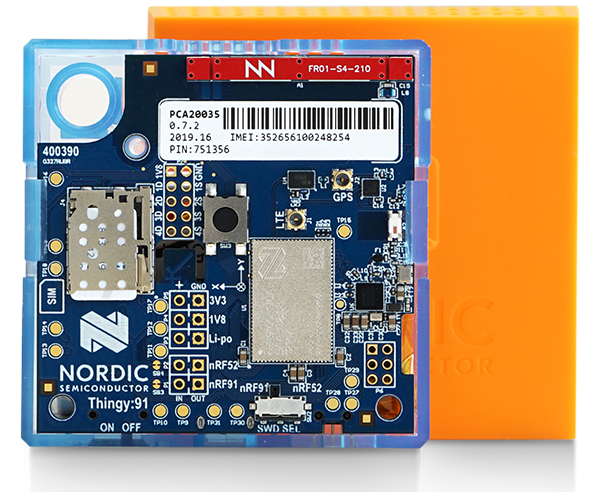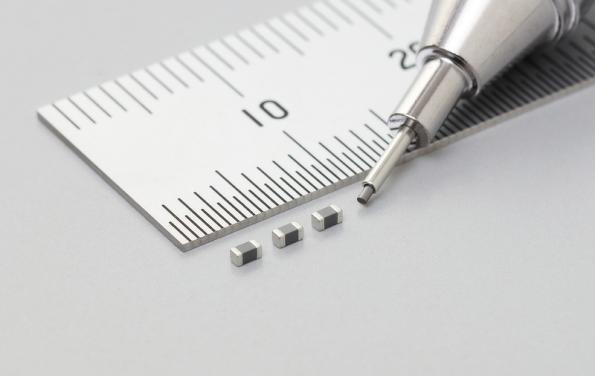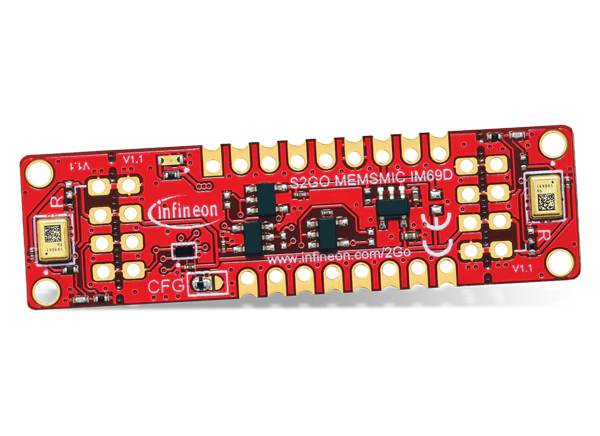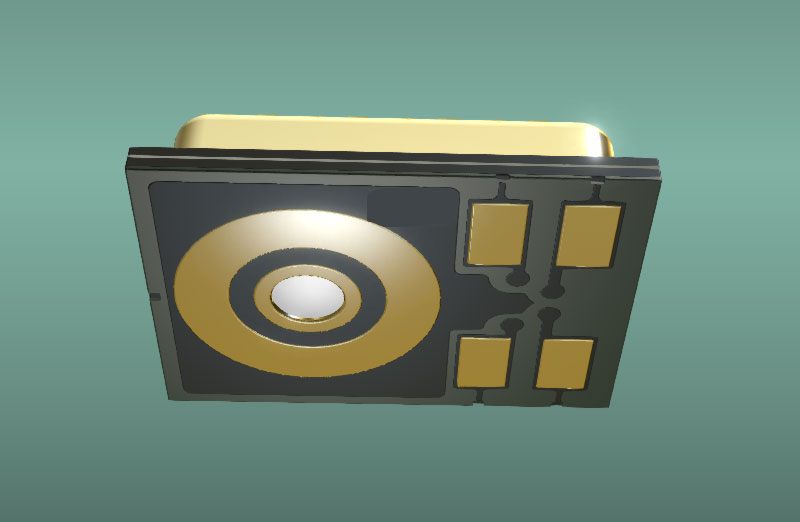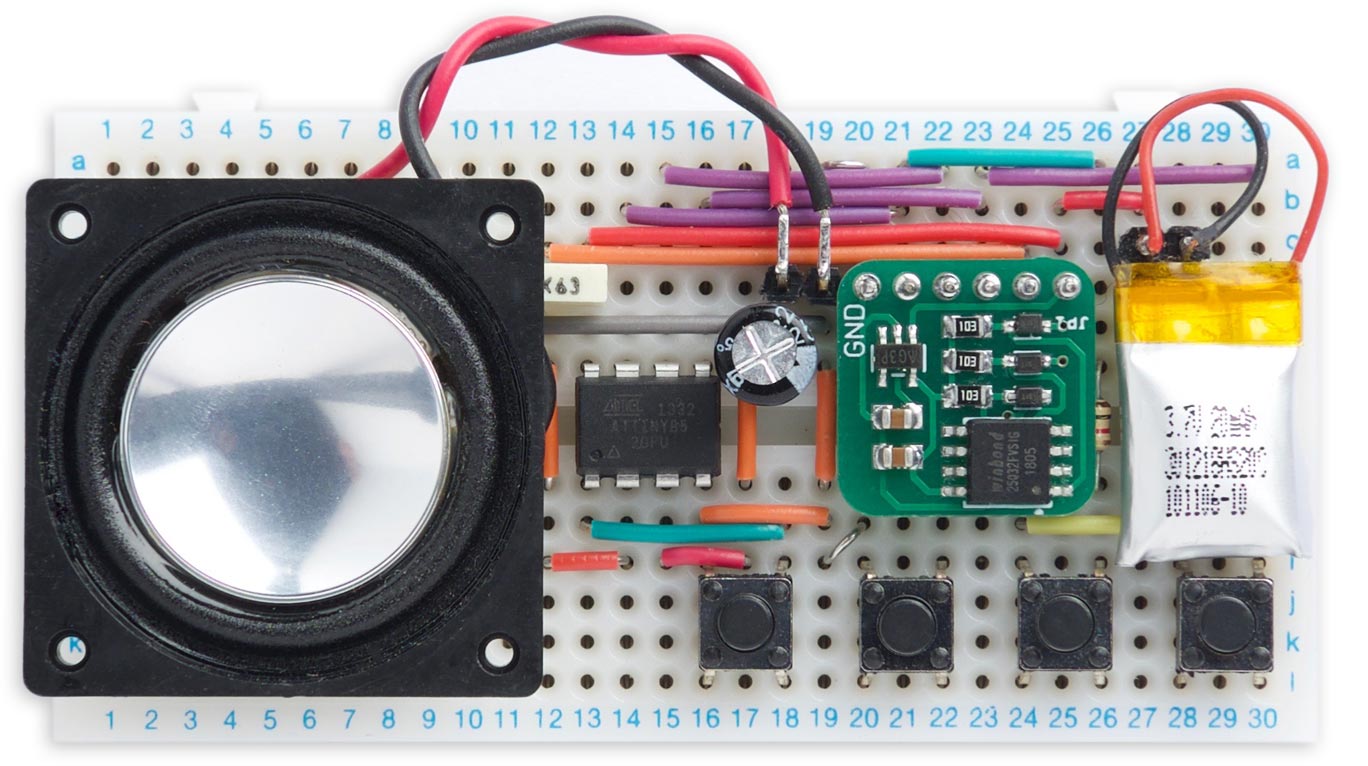
C-1200 is the first multi-channel LoRa-specific 1U rackmount tester for transmitter and receiver signal evaluation
Saelig Company, Inc. has introduced the GWInstek C-1200 LoRa Tester – a one-box tester that incorporates a multitude of LoRa transmit and receive tests. The C-1200 provides transmitter tests that include spectrum analysis, time domain, FEI (Frequency Error Indicator), and TOA (Time-On-Air). LoRa Receiver tests include sensitivity, BER (Bit Error Rate), and PER (Packet Error Rate). In addition to sub-GHz frequencies, the C-1200 also supports the 2.4GHz band and the FSK signal test. Users can easily edit the transmitted test payloads. Receiving data formats supported include binary/HEX, and ASCII code, which allows data transmission results to be easily verified. A useful transfer box C-1201 is also available for easy connection of the C-1200 to a LoRa module being tested and controlled via UART/SPI/I2C interfaces.
The C-1200 can directly perform LoRa transmission signal measurement in the frequency domain as well as the time domain. In the frequency domain, LoRa’sCSS (Chirp Spread Spectrum) signal spectrum can be directly displayed; in the time domain, signal changes within a set time range can be displayed.
LoRa transmission signals may encounter a frequency error caused by environmental factors, resulting in a decreased sensitivity or loss of a packet. FEI can be used to measure the DUT transmission frequency error , so that adjustments or corrections for this error can be made during production or quality control, ensuring communication quality in deployed LoRa networks. With four sets of half-duplex RF TRX test channels in the C-1200, it is ideal for end-of-line testing of LoRa products.
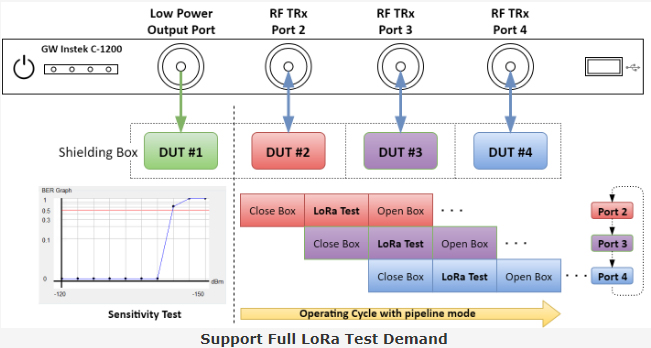
Since LoRa devices are usually located outdoors, even in remote areas, power consumption characteristics become an important part of the LoRa system. A setup with a C-1200 plus a PPH-1503 high-precision power meter or a GDM-9061 six-and-a-half digit digital meter can directly perform the power consumption test through the provided PC software, making the LoRa test even more comprehensive.
The dedicated test application software provided offers a wide range of accessible functions, allowing users to quickly become familiar with test operations. In addition to the complete RX and TX test functions, the MP (Mass Production) test can perform a large number of repetitive tests by selecting appropriate parameter settings to be tested in production-line environments. In the Spectrum Mode, users can perform US FCC 15.209/15.247 communications test regulations to ensure that the tested product complies with the communications rules both of Europe and the USA.
Housed in a 1U aluminum rackmount case and weighing 17lb, the 22” x 17” x 1.75” C-1200 LoRa tester is made by the Taiwanese test and measurement specialists GW Instek.


